Table of Contents
1. Introduction
2. Types of Snow Chains and Their Usage
3. Market Overview and Trends
4. Key Considerations When Selecting Snow Chains
5. Leading Snow Chain Models and Their Features
6. Conclusion
Introduction
Snow chains are crucial for improving traction and safety when driving on icy roads during harsh winter conditions. They wrap snugly around tires to offer grip and lessen the chances of skidding while enhancing control. These chains are essential for trucks traversing mountain routes or cars in city settings, guaranteeing stability and dependability in inclement weather. In 2025, as winter weather grows increasingly erratic and unpredictable, businesses are prioritizing the choice of high-performance snow chains for any conditions that may arise.
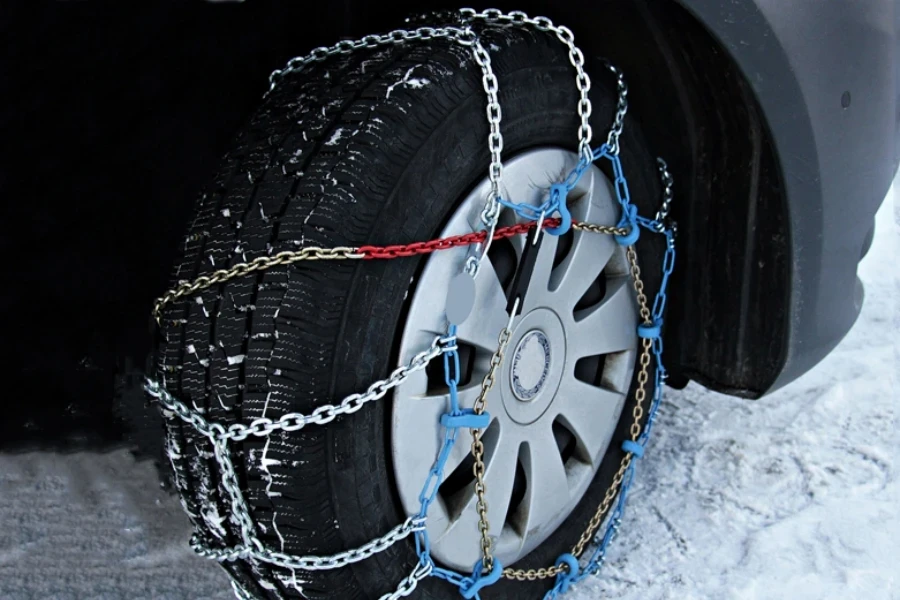
Types of Snow Chains and Their Usage
Traditional steel snow chains
Steel snow chains are famous for their robust construction and ability to give excellent grip in snowy and icy conditions by wrapping around the tires with their heavy metal links. These chains are perfect for vehicles regularly driving through snow or mountainous areas. Their toughness makes them great for long-distance travel, but they need to be installed carefully and maintained well to avoid rust issues. Even though these chains work well, they can be loud and tricky to set up if you’re not used to them.
Composite snow chains
Composite snow chains are improved alternatives to the classic steel versions. The composite chains are crafted from substances like polyamide or aramid fibers, resulting in lighter weight and more flexibility. They are valuable for driving in city areas where road conditions vary between snow-covered and clear paths, offering a better driving experience with minimal vibrations. Composite chains are also simple to install and are particularly suited for cars used in regions that experience occasional snowfall. Although they provide good grip levels, tire chains may not last as long as steel chains when driving in challenging conditions, like rough and icy roads.
Cable chains
Cable chains are a less bulky choice specifically crafted for cars with restricted space between the tire and the wheel well area. The chains are crafted from steel cables coated with protective materials to offer reasonable traction and are simpler to manage than standard chains. They work best in light snow situations and city settings where the need for chains arises sporadically. Wire chains are not recommended for heavy snow or regular use due to their lower durability and grip levels than traditional steel ones.
Hybrid designs and alternatives
Hybrid snow chains blend the benefits of traditional chains and cables by providing traction and user-friendly installation options. These designs may feature diagonal cross-cable patterns or rubber adjusters that simplify installation while maintaining excellent performance in snow and ice. Some hybrid models are also self-tensioning, ensuring a secure fit without additional adjustments. These chains are particularly well-suited for drivers who need a balance between durability and convenience, especially for SUVs and light trucks that encounter varying winter conditions.
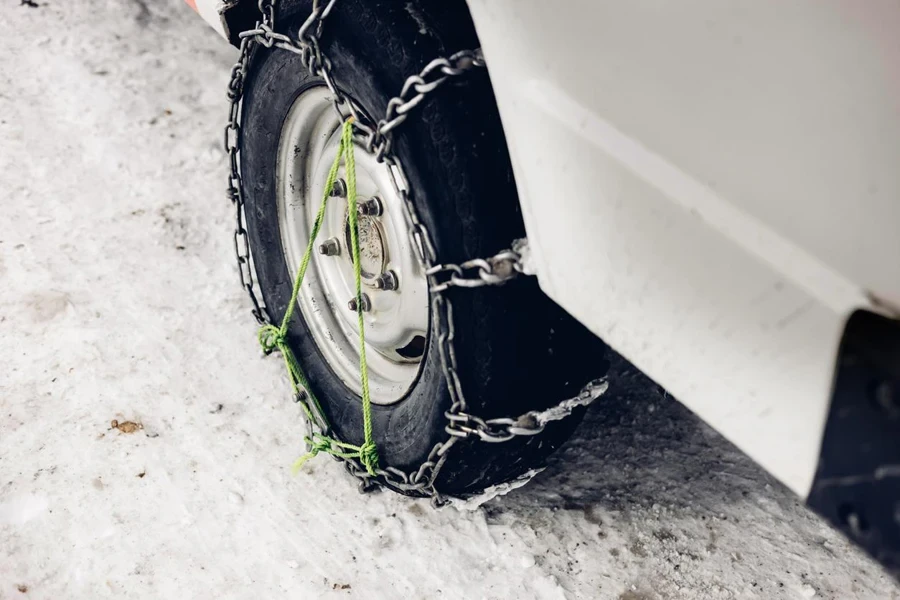
Market Overview and Trends
Global Snow Chain Market Forecast
Experts estimate the global snow chain market to be around USD 200 million in 2022. It is anticipated to increase steadily to about USD 286 million by the year 2030, with a compound annual growth rate of 4.5%, expected from 2024 to 2030. The growing demand is attributed to a focus on road safety in challenging winter climates and regulations that require snow chain usage in specific areas to improve vehicle grip and minimize accidents.
Innovation in materials and design
New advancements in snow chain technology have led to more long-lasting chains that are simpler to implement. Companies are utilizing materials such as composite polymers to decrease the weight of the chains without compromising strength. Moreover, innovative designs with self-tension systems and diagonal cross patterns enhance installation speed and traction. Some chains even come equipped with noise reduction features for a quieter and smoother driving experience, making them ideal for city driving conditions.
Key Considerations When Selecting Snow Chains
Vehicle type and chain compatibility
When picking out snow chains for your vehicle’s tires, it’s crucial to ensure they are compatible with your vehicle type, whether it’s an SUV, truck, or sedan. Not all chains will work well on different vehicles due to variations in tire sizes and clearance levels. For instance, trucks and SUVs need chains with excellent traction because of their heavier weight. On the other hand, sedans can do with lighter chains that won’t cause any issues with the limited space between the tire and wheel well. Check the car manual or tire information sticker to pick the chains that fit well and match the vehicle’s weight capacity and usage.
Ease of installation
During emergencies, the ease of setting up becomes a crucial element. Snowstorms can catch you by surprise and swiftly putting on chains could mean the difference between driving safely or getting stranded in dangerous weather conditions. Contemporary snow chain models focus on making the installation process more straightforward, providing conveniences such as self-adjustment mechanisms or rubber tensioners to cut down on the time and energy needed for attachment. Manual adjustable chains may not be ideal for certain weather conditions like freezing temperatures, that’s why most drivers opt for products with easy-to-use designs that minimize the need for constant handling and tinkering.
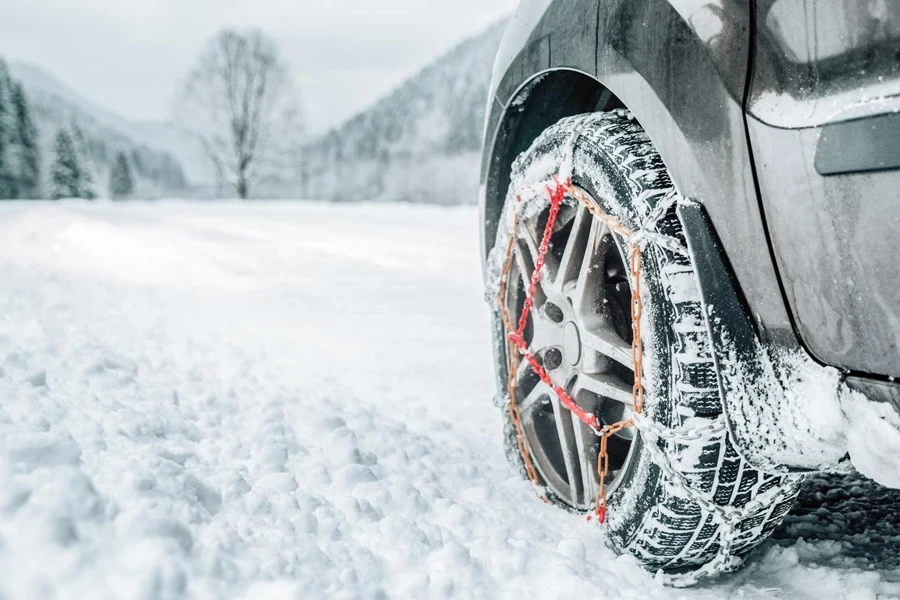
Performance in various weather conditions
Snow chains are made to improve grip in winter conditions such as icy roads or snowy surfaces like packed or deep snow; however, their effectiveness can differ based on the type of chain used. Steel links are great for deep snow and ice due to their strong grip, while composite or cable chains work better in lighter snow but may not be as reliable for thick ice coverage. Knowing the winter weather in a specific location can help you choose the right snow chain for improved control and stability while driving in various conditions.
Durability and maintenance
Choosing the right snow chains is crucial for vehicles that often navigate harsh winter terrains and durability is an important factor to consider. Typical steel chains are recognized for their robustness and lasting quality, making them perfect for jobs like enduring long journeys along snowy roads or challenging off-road environments. Conversely, a lighter choice, like cable chains, may not offer similar longevity but are simpler to manage and store. To keep your chains in good condition and maximize their lifespan and performance when using them frequently, it’s important to regularly inspect them for signs of wear, making sure they are free from rust or any damage.
Leading Snow Chain Models and Their Features
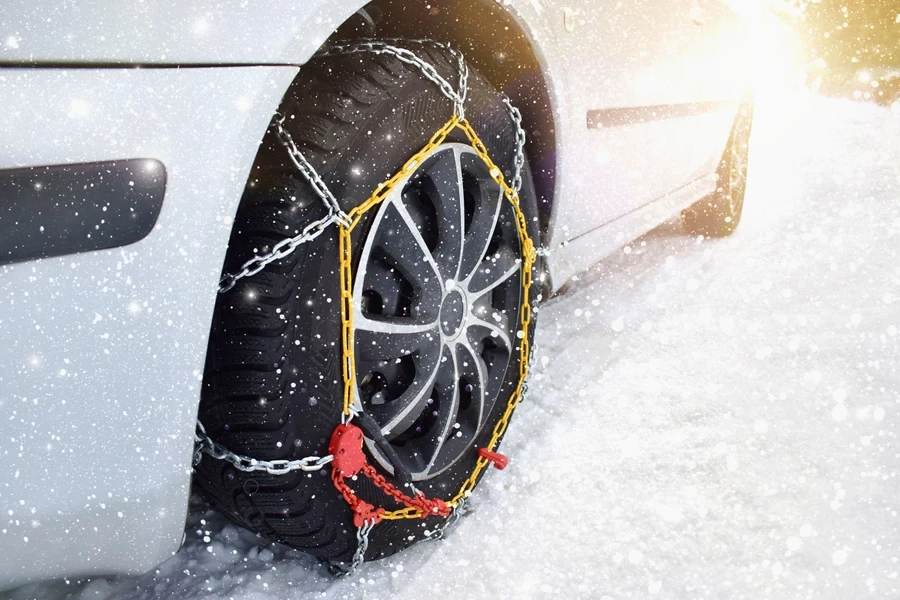
Top models from reputable brands
Known companies such as Quality Chain and Thule are renowned for their dependable snow chain products tailored for various types of vehicles. Quality Chains QV747 Volt LT series is specifically engineered for SUVs and light trucks to deliver lasting performance and superior traction in harsh winter environments. Constructed from materials that support heavy-weight loads and provide a secure grip on icy roads, these chains are ideal for larger vehicles typically used in mountainous or remote regions.
Thules Easy Fit CU9 stands out among users due to its simple installation process and convenient features that adjust the fit automatically once the chains are in place. This is perfect for those looking for an easy setup, even in tough conditions. Ideal for small cars and offering both reliability and ease of use, it’s a favorite pick for city drivers navigating through lighter snow situations.
Performance features comparison
Snow chain performance characteristics are crucial in how they work on the road. Snow chain brands like Thule and König offer models with self-tension systems that adjust automatically while driving. This feature makes it easier for drivers by reducing the need for tightening and improving grip and safety levels. It’s especially beneficial for drivers who often lack the time or expertise to adjust their chains.
In areas where using chains for a long time can be bothersome due to noise pollution and roadway discomfort, noise reduction plays a significant role as a standout feature in modern chain designs. Newer chain models are crafted with materials and designs that aim to minimize the clattering sounds typically associated with traditional steel chains. This improved design makes driving a quieter and smoother experience and focuses on enhancing overall comfort for the rider. Moreover, brands like König have incorporated quick-release mechanisms in their chains for removal, a handy feature to have, especially when road conditions suddenly change.
Tires featuring diamond-shaped patterns offer better grip by maximizing contact with the road surface compared to conventional ladder pattern chains commonly used for light snow conditions. They provide stability when driving over icy roads and help minimize the risk of slipping.
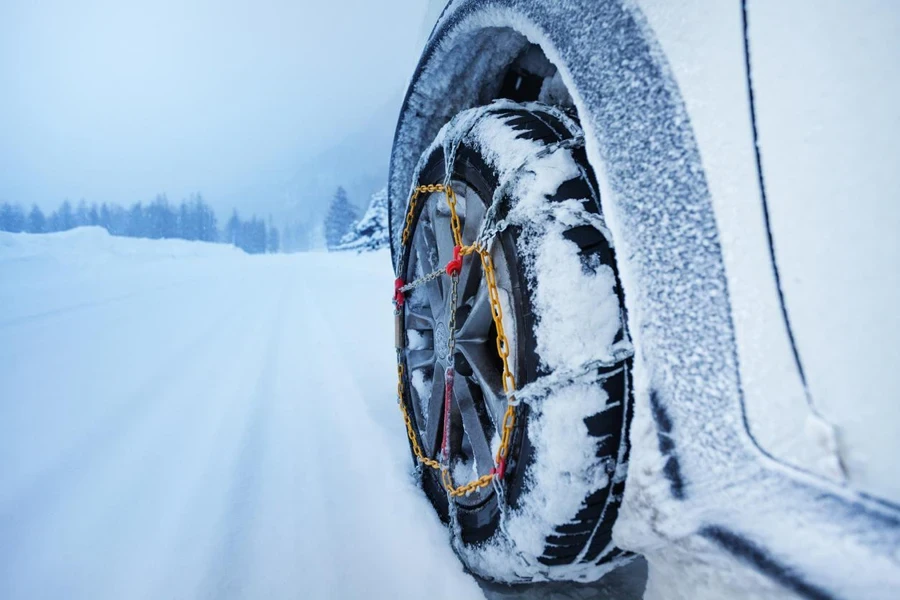
Best options for different vehicle types
Choosing snow chains for different types of vehicles is essential to ensure safety and optimal performance levels are met. For cars and sedans, it is recommended to use lighter chains, such as the König CB 12 or Glacier Cable Chains, as they provide adequate traction while still being easy to install and handle effectively. The compact designs of these chains are particularly beneficial for vehicles with limited tire clearance space.
SUVs and light trucks benefit from options like the Quality Chain QV747 and the Quik Grip series from Security Chain Company, as they offer improved traction for larger vehicles. They are designed to support heavy loads and ensure optimal stability in challenging conditions like deep snow or icy roads. This makes them ideal for vehicles navigating rugged terrains or areas with frequent heavy snowfall.
Heavy-duty trucks use the Security Chain Z743R and others of its kind for tough conditions and long journeys through snowy terrains. These cains have ruggedness designed to last even when used frequently in harsh environments.
Conclusion
In 2025, it’s especially important to choose ideal snow chains to ensure safe and dependable winter driving conditions are met. Businesses should pay attention to vehicle types and features like self-tensioners and noise reduction for quality assurance and compatibility. Top brands such as Quality Chain and Thule provide models for large vehicles and compact cars to enhance traction in different weather scenarios. The development of snow chains has progressed through advancements in materials and design while also emphasizing the importance of meeting requirements. Underscoring the importance of investing in products that blend performance efficiency and long-lasting quality is key.




